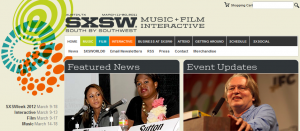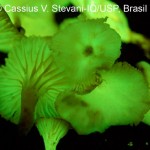 I’ve done it. I’ve submitted a proposal to SXSW.
I’ve done it. I’ve submitted a proposal to SXSW.
Alas, I was only able to submit one, despite all the ideas I had (anyone going to submit others, want to coordinate?)
I can edit this until 05 August, then I guess the voting begins. Next step for me is to determine if it’s a panel or solo or what. I don’t think I represent a typical DIYbiologist enough to go solo, so hence my preference for leading a panel with some of you hot-shots (you know who you are).
See current proposal below (with comments):
Title: DIYbio: hackspaces, open source & f*ck yeah ethics
Event: SXSW Interactive 2012
Organizer: Charlie Schick
Description: Humanity has been messing with biology for millennia. In the last 50 years, the tools have advanced to where we can design new remixes of organisms to make things for us, such as fuel, drugs, and the fresh smell of rain. What’s more, the open source and hackspace tinkering culture of the tech world has spilled over to create a nascent and vibrant community of do-it-yourself biologists. this session bring you up to speed with what DIYbio is, how you can get involved, and what are the resources available. [CS: Obviously I need to flesh this out. If this is a panel, I have a list of folks I’d like to be on it to represent the community (see supporting material below). If this is a workshop, then it’ll be a about tinkering.]
Questions answered:
1. What is DIYbio?
2. How can I get involved in DIYbio?
3. What are the resrouces I can access – info and instruction, space, pepole, events?
4. What is the future of making things thorugh biology?
5. Why is this important to the SXSWi crowd?
Level: Beginner
Supporting material: http://diybio.org, http://genspace.org/, https://www.facebook.com/BioCurious, http://openpcr.org/
Category: Emerging Technology / Mobile [CS: Best category I could find. Not sure why mobile is still considered “emerging”.]
Tags: diybio, hackerspaces, science
And, hat tip to @100ideas and the folks from the DIYbio Continental Congress for the “f*ck yeah ethics” in the title.
 Dang. When I read this title, I was hoping it was some symbiotic bacteria that was glowing and there’d be some cool story as to how the fungi take up the bacteria. Alas, the fungi produces its own glow. But then, quite interesting that its done with luciferase, like fireflies. A quick look at Luciferase in Wikipedia <http://en.wikipedia.org/wiki/Luciferase> shows that luciferase is found in quite divergent organisms.
Dang. When I read this title, I was hoping it was some symbiotic bacteria that was glowing and there’d be some cool story as to how the fungi take up the bacteria. Alas, the fungi produces its own glow. But then, quite interesting that its done with luciferase, like fireflies. A quick look at Luciferase in Wikipedia <http://en.wikipedia.org/wiki/Luciferase> shows that luciferase is found in quite divergent organisms.